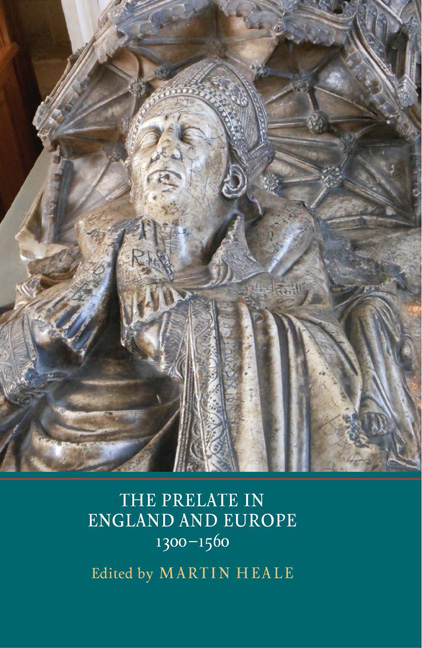Book contents
- Frontmatter
- CONTENTS
- List of Illustrations
- List of Contributors
- Preface and Acknowledgements
- List of Abbreviations
- Introduction
- Part I Prelates and Power
- Part II Patronage and Learning
- Part III Identity and Display
- Part IV Attitudes towards Prelacy
- Index of People and Places
- Index of Subjects
- YORK MEDIEVAL PRESS: PUBLICATIONS
Introduction
Published online by Cambridge University Press: 05 November 2014
- Frontmatter
- CONTENTS
- List of Illustrations
- List of Contributors
- Preface and Acknowledgements
- List of Abbreviations
- Introduction
- Part I Prelates and Power
- Part II Patronage and Learning
- Part III Identity and Display
- Part IV Attitudes towards Prelacy
- Index of People and Places
- Index of Subjects
- YORK MEDIEVAL PRESS: PUBLICATIONS
Summary
The years between the early fourteenth and the mid sixteenth century are of considerable interest in the history of the prelate. In some respects, this era might be regarded as a golden age of prelacy, culminating in the appearance of great ecclesiastical dignitaries across much of Europe, such as Wolsey, d'Amboise, Cisneros, Lang and Jagiellon. In terms of their political weight, their grandeur and their wide-ranging cultural patronage, these early sixteenth-century ‘cardinal-ministers’ arguably represented a high point in prelatical influence. Nor should they be regarded as wholly distinct from their clerical contemporaries: recent studies of Renaissance cardinals and the early Tudor episcopate indicate that the next rank of senior churchmen were no less concerned to express the importance and dignity of their office. However, the period c. 1300–c. 1560 also witnessed a developing critique of prelacy – not unconnected with these eye-catching assertions of ecclesiastical status and power – with complaints about senior members of the Church hierarchy a commonplace in the literature and preaching of the day. To these criticisms were added attacks on the very concept of the prelate, which was rejected as unscriptural by John Wyclif and his followers: a critique which would be taken up enthusiastically by sixteenth-century reformers in England and Europe.
- Type
- Chapter
- Information
- The Prelate in England and Europe, 1300–1560 , pp. 1 - 14Publisher: Boydell & BrewerPrint publication year: 2014



